Arctic Fox Facts For Kids
When it comes to wildlife in the world’s coldest regions, we often think about fluffy white creatures that thrive in the snow. The Arctic fox is one of those creatures! It is generally found in the Northern Hemisphere through the Arctic regions.
These small animals have bodies that are built for living in the cold, with thick fur and long tails. In this article, we will take you through several facts about Arctic foxes. First, we’ll walk you through a set of basic facts that are important to know about. After that, we’ll go through some fun facts that you might not have known about earlier!
Let’s get right to it.

Quick Arctic Fox Facts
- The Arctic fox has a strong sense of smell that helps them catch their prey hidden underneath the snow.
- Arctic foxes dive headfirst into the snow when hunting for lemmings.
- Arctic foxes have two types of communication sounds: interaction sounds and contact sounds.
- They are migratory creatures.
- The Arctic fox’s thick fur can resist temperatures as low as -14°C.
- Arctic foxes are fast runners.
- Arctic foxes don’t hibernate at all during the year, even in winter.
Basic Arctic Fox Facts
Name
The official name for the Arctic fox is Vulpes Lagopus.
Scientific Classification
The scientific classification for the Arctic fox is as follows:
- Kingdom: Animalia
- Phylum: Chordata
- Class: Mammalia
- Order: Carnivora
- Family: Canidae
- Genus: Vulpes
- Species: V. Lagopus
Latin Name
The Arctic fox’s Latin name is Vulpes Lagopus. When translated, Vulpes means fox, while Vulpes Lagopus means ‘hair on feet,’ which is about the hair that grows on an Arctic fox’s paw pads.
Appearance
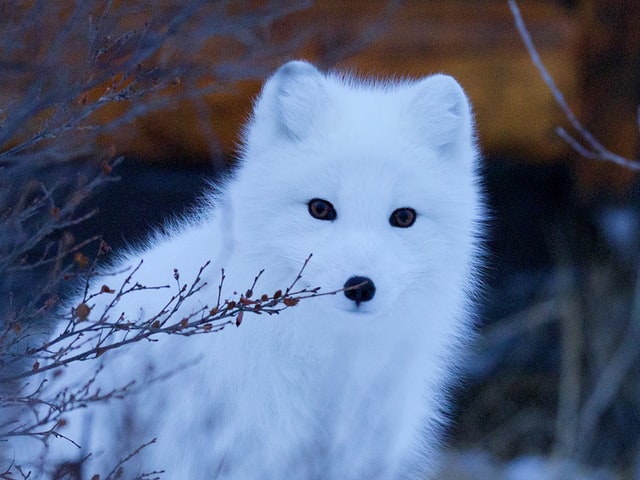
Arctic foxes have thick white fur during the winter months and long, bushy tails that help keep them warm in the snow. However, it is important to note that the color of the Arctic fox’s fur color changes as the seasons change throughout the year. When the weather gets warmer, the Arctic fox doesn’t need as much warmth and protection from the cold as it normally does. Therefore, during the summer months, its fur gets thinner and becomes bluish-brown, which helps the fox camouflage itself better in the landscape without snow. They also have short legs.
Size and Weight
The average Arctic fox can weigh anywhere between three and nine kilograms, making it the same size as a house cat. They are usually about one foot tall and two feet wide.
Habitat and Range
Just like the color of its fur, the Arctic fox’s habitat changes with the seasons. The Arctic fox typically lives on ice floes during the winter because its white fur helps it remain camouflaged and safe from predators. When the weather gets warmer, the Arctic fox usually lives near a forest, in a tundra.
In terms of range, the Arctic fox is usually found in the Northern Hemisphere, in places like Alaska, Canada, and Greenland. It is also often found in parts of Iceland, Asia, and Europe.
Diet
The Arctic fox eats a varied diet consisting mainly of animals smaller than itself. These include rodents like voles and lemmings, along with birds, hares, fish, and eggs. At times, these foxes also eat the carcasses of other animals like polar bears and wolves. It’s worth noting that the diet of the Arctic fox depends on its location. For instance, the foxes in Canada and Iceland typically prey on migrating birds. The Arctic fox also eats berries and plants, which means that they are not pure carnivores.
At times of food scarcity, the Arctic fox might also eat its own feces, but this does not happen often.
Life Expectancy
Arctic foxes usually live for about four years in the wild but can live for more than 13 years in captivity.
Also Read: Arctic Wolf Facts
11 Interesting Facts About Arctic Foxes
The Arctic fox’s fur acts as a blanket
Since these creatures live in places that don’t often see the sun, it’s important that they conserve body heat and remain warm at all times. This is where their fur comes into the picture. The Arctic fox has a thick and bushy tail that it wraps around itself to keep warm while also helping it maintain an internal temperature of around 160°.
Arctic foxes must eat a lot of food to keep warm and stay alive
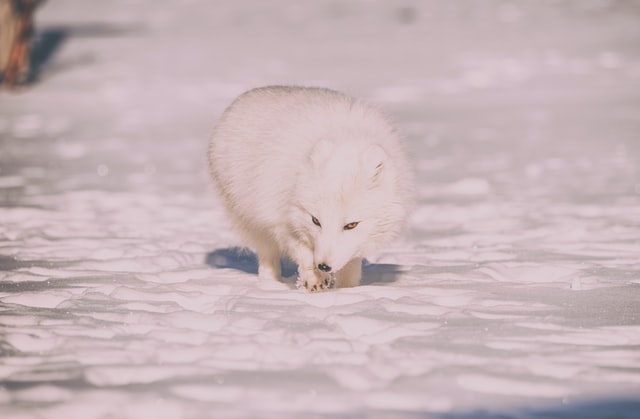
When the winter months get closer, the Arctic fox must eat a large enough quantity of food that helps it stay alive and get through the winter months more easily. If the fox has eaten enough food, it can stay warm in its den for a longer time. On the other hand, if the fox has not eaten enough, it will conserve energy and slow its heart rate down by staying in its den.
The Arctic fox is a social animal
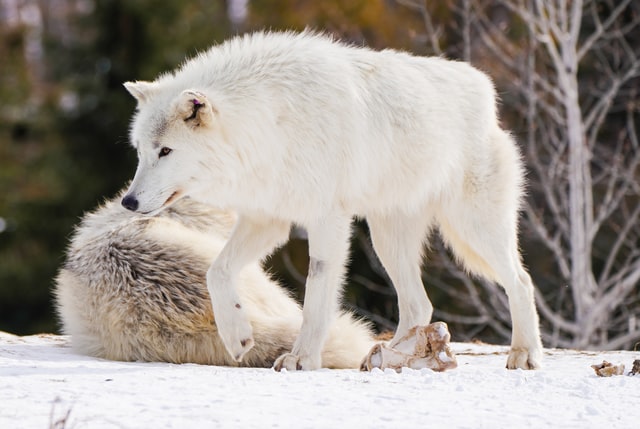
The Arctic fox typically goes hunting for food in small groups consisting of four or five members. When it comes to living spaces, these foxes will live in a den at the button of a cliff, constructed out of a mound of rocks. In many cases, Arctic foxes live in dens that previous generations of foxes constructed. The average group of Arctic foxes consists of a male, two females, and a litter of infant foxes.
Arctic foxes reproduce at a young age
The average Arctic fox becomes sexually mature at quite a young age, usually around ten months.
The mating season for Arctic foxes begins in spring
Once the winter months get over, the fox turns its attention to the female fox, which is known as a vixen. Since spring usually begins in April, the fox will start to find a safe den for the female to give birth.
Arctic foxes burrow in dens with multiple entrances
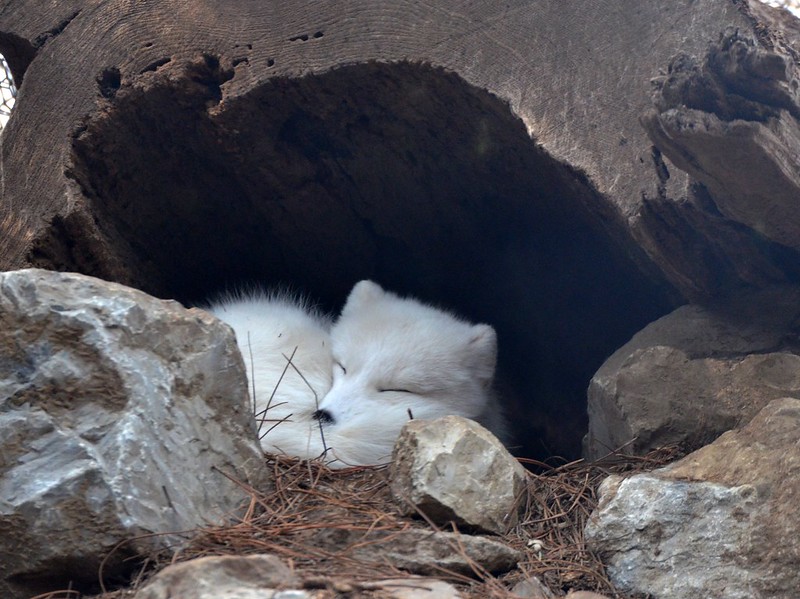
When the Arctic fox goes in search of a place to live, it makes sure that the den has multiple entrances. This is because the male fox and its family must be able to escape quickly if predators are in the area. The den must be free of frost and snow and must have several entrances. These foxes also tend to choose dens that face the sun so that the inside of their living space is warm.
The Arctic fox is sometimes referred to as the lemming fox.
Arctic foxes are often called lemming foxes because lemmings are their main source of food. While lemmings are more commonly found in some areas, Arctic foxes typically choose to burrow inside dens with a high population of lemmings during a vixen’s gestation period and after she gives birth. If there is a high number of lemmings in a den, the Arctic fox can give birth to more than 15 pups at a time. However, if there is a shortage of food, the foxes will refrain from copulating.
A baby Arctic fox is known as a kit
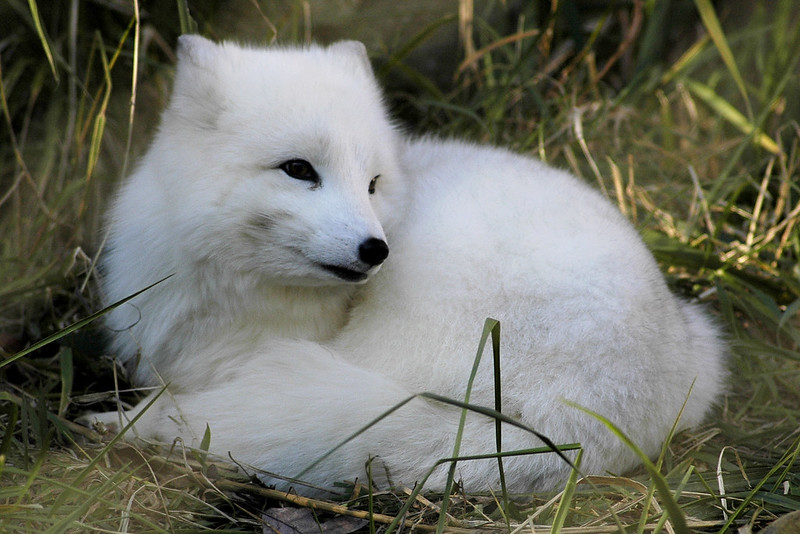
Contrary to popular belief, a baby Arctic fox isn’t called a cub, but it is called a kit.
Arctic foxes are nomadic
The reason that these foxes are nomadic is because of their diets. If a particular area does not have a good enough food supply, they will move away in search of a place with better food.
A family of Arctic foxes has two females
Even though these creatures are monogamous and mate for life, a family of Arctic foxes usually consists of one male and two female foxes. One of the vixens gives birth to the litter. The second vixen helps with taking care of and rearing the kits.
Arctic foxes are not under threat
Thankfully, the Arctic fox’s conservation status is not being threatened. The International Union for Conservation of Nature (IUCN) has stated that Arctic foxes come under the category of least concern!
Conclusion
In this article, we took you through a list of eleven facts that walk you through lots of information concerning the Arctic fox. These nomadic creatures live extremely interesting lives in the planet’s northern hemisphere. From the fact that their fur changes color as the seasons change to the complex dens that they build, the Arctic fox is an intelligent and resourceful creature. They are also not under any threat, which means that research concerning this species of fox has a long way to go!
FREQUENTLY ASKED QUESTIONS
1. How do Arctic foxes communicate with each other?
Arctic foxes communicate through vocalizations, body postures, and scent markings. They use barks, yelps, and squeals for vocal communication. Body postures include tail and ear movements to convey messages. Scent marking with urine, feces, and scent glands helps establish territories and communicate with other foxes. These methods enable social interactions and reduce conflicts among Arctic foxes.
2. What are the main predators of Arctic foxes?
Polar bears and larger predators like wolves and wolverines are the principal enemies of Arctic foxes. Arctic foxes are at danger from these predators, especially when they are looking for food or if the foxes’ den is found. Golden eagles and other raptors may also hunt Arctic foxes, especially the young ones. In the snow-covered Arctic environment, the Arctic fox’s white fur serves as concealment against potential predators.
3. How do Arctic foxes raise their young?
Arctic foxes engage in monogamy and establish enduring pair connections. After mating, the female Arctic fox constructs a lair, a tunnel where she gives birth and rears her pups. The den offers cover and defense against the harsh Arctic elements. Five to ten pups, who are born blind and defenseless, are born in the female’s litter. Both parents actively participate in rearing their offspring by giving the children food and shelter. While the father goes on a food hunt, the mother tends to the puppies. Until they are mature enough to care for themselves, which is typically around 9 to 10 months, the pups remain with their parents.
